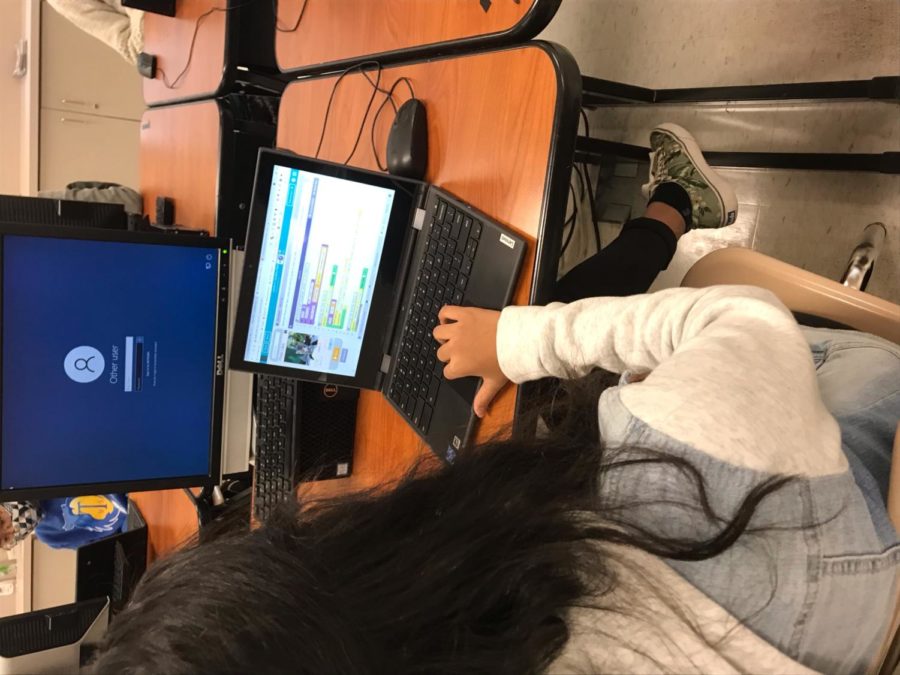RM should enhance CS program
A student learns about variables on a Code.org module.
December 14, 2021
Computer science is a relatively new field with booming popularity both in college and career ventures. One would expect this trend to be reflected in high schools as well, but it is quite the opposite. According to Forbes, under 5 percent of students are enrolled in a computer science course, and only 51 percent of high schools even offer tech classes. RM falls in that 51 percent but has not created a program that encourages students to pursue it throughout high school. A restrictive curriculum and little efforts to increase variety has made the course unappealing, resulting in a majority of students dropping it.
The RM CS path consists of four classes: CS Principles, CS A, IB CS 1 and IB CS 2. Many students end up just taking a single course to satisfy their technology credit. It goes downhill from there to the point where only a dozen or so students take IB CS 2 per year. A majority of the tech pathway is closely tied to a rigid AP curriculum often focusing on niche subjects that bore students and set a false expectation for the following courses.
In the earlier courses, students are expected to slog through endless lessons in Code.org. “The course did go slow in the beginning and it still does now,” sophomore Lucas Roca said. In later classes, the AP curriculum can be jumpy and rushed, forcing students to move on before fully understanding a concept. “It would be a lot more enjoyable if we were to spend some more time on each topic so we feel like we have a solid understanding of the language,” freshman Leon Wang said.
Still, it should be acknowledged that despite the curriculum, RM has a good track record for passing the computer science AP tests. “I think our record of passage rate [for AP CS Principles] speaks for itself because it’s above 85 percent, every single year,” computer science teacher Kimberly Gustin said.
As it stands currently, RM does not promote the later courses, and many students do not even know they exist. There are few ways for students to learn about the pathway as a whole, resulting in students only taking the first mandatory course. The CS program at RM has undergone some development over the years, however. “Since being here in my fifth year, AP CSP went from three sections to nine,” Ms. Gustin said.
RM also fails to offer variety, only having a grand total of five tech classes, each focused on unadorned programming. By only presenting basic programming classes, they dissuade students who are interested in other aspects of IT such as game design, or at the very least teaching another language besides Java and JavaScript. The program may be offering Python starting next year but students still want variety in the applications of these skills. “I don’t think I will continue taking comp sci courses unless they add something like cyber defense,” Roca said.
Another issue with RM’s program is its lack of staffing and subpar computers. For the last three courses, there is only one teacher, forcing students to be crammed into classes. Currently, all the students enrolled in IB CS 2 are split up into smaller groups and distributed among other classes. They are expected to fend for themselves in the classes without a teacher to give them the attention and instruction they need.
The poor desktop quality is another reason for the decreasing enrollment. “A handful of the computers in the computer lab are really slow and it’s making it difficult for some students to complete classwork or just follow along in class in general,” Wang said. Though Richard Montgomery has taken few measures to encourage students to take tech courses, it is important to note that even having them offered at all is somewhat of an achievement as they are only found in a slim majority of high schools. Adding in the tech requirement is also a major step in getting as more students exposed to computer science classes.
Despite an increasing demand for tech-savvy workers, many high schools have woefully underdeveloped tech programs. Though RM’s computer science program is not quite as bad as those of other high schools, RM’s computer science path remains an unattractive option for many students.



